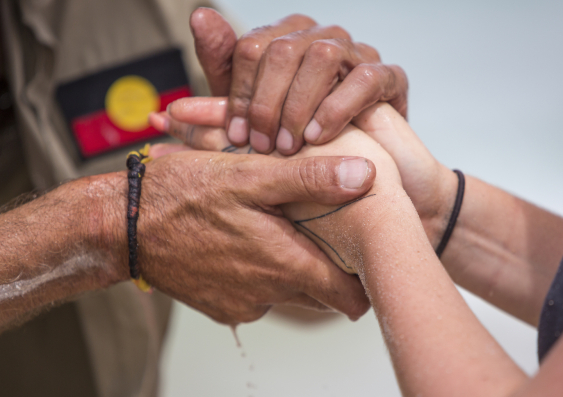The Voice is a sensible reform conservatives, moderates and progressives can support
The proposed change to the Constitution is straightforward. Now is the time to say Yes to overcoming Indigenous disadvantage.Ìý
The proposed change to the Constitution is straightforward. Now is the time to say Yes to overcoming Indigenous disadvantage.Ìý

Why vote Yes to the Voice proposal? Because it is a practical improvement that is compatible with our existing parliamentary democracy. It comes from Aboriginal and Torres Strait Islander people desperate to see an end to poor policies and wasted public money. And it can make a difference to closing the gap between Indigenous and non-Indigenous people.
The words of proposed section 129 of the Constitution are carefully chosen to do just four things. The brevity is not a trick, nor an attempt to hide something. Instead, it minimises opportunities to run court cases and ensures that Parliament is in charge of the detail.
The four elements are simply stated. Section 129 establishes the Voice as a new constitutional body. It gives the Voice its core function of making representations to Government and the Parliament on matters relating to Aboriginal and Torres Strait Islander peoples. It gives Parliament the broad power to decide the details of what the Voice will look like and how it operates. And it designates the Voice as the chosen form of constitutional recognition.
By empowering the Voice to make representations, it focuses on political participation aimed at influencing laws and policies, rather than imposing legal duties on Parliament and Government to be enforced through the courts.
Section 129 properly distinguishes between the Constitution and legislation. The Australian people determine the question of principle: whether to recognise Indigenous people through a body that gives them a say on laws and policies. If the vote is Yes, then Parliament will legislate the details. Later, Parliament can amend the Voice, as circumstances change and lessons are learned from experience.
Read more:Ìý
The Voice proposal comes from Indigenous people. It follows a prolonged national discussion. FromÌýJohn Howard onwards, seven prime ministers have gone to elections committed to constitutional recognition. But for a long time Canberra politicians were unable to resolve what proposal should be put to the people.
Eventually, in 2015, 40 Indigenous leaders met with Tony Abbott and Bill Shorten to address this loss of momentum. Soon after, Malcolm Turnbull established the Referendum Council. Its Indigenous Steering Committee devised a model for consultations that could advance the debate.
At each of twelve Regional Dialogues around Australia in 2016-17, about 100 Indigenous men and women deliberated in good faith over three days about the proposals for constitutional recognition. Each gathering selected delegates for a constitutional convention at Uluru.
In May 2017, convention delegates endorsed a reform agenda expressed in the Uluru Statement from the Heart. It called for a constitutional Voice. The Referendum Council recommended we proceed to a Voice referendum. That proposal did not have an easy path to acceptance in Canberra after May 2017. But it continued to win wider community support and now the Australian people get their say.
Read more:Ìý
The Voice proposal recognises a structural problem. Our Constitution contains a races power: Parliament can single out a group on the basis of race and make a law about them. It has only ever been used in relation to Indigenous people. They are three per cent of the population, spread thinly across 151 electorates. They simply don’t have the political levers to influence the laws and policies that affect them.
The evidence of that structural problem is in the data. Of 19 indicators to assess progress in Closing the Gap, only four are on track. Four others are going backwards. Business as usual is failing.
As the Productivity Commission said, ‘Government acting alone is unable to overcome Indigenous disadvantage’. Critical to improved outcomes is ‘enabling Aboriginal and Torres Strait Islander people to share in decision-making about things that affect them’.
There is wide support for constitutional recognition. The country can unite around a simple, powerful and practical idea: give Indigenous people a Voice. Other Australians won’t lose anything by including a Voice in our Constitution. And there is so much to gain.
Sean Brennan is an Associate Professor at UNSW Law &ÌýJustice and was a member of the pro bono legal team that supported the Regional Dialogues and Uluru Convention.
Authorised by Alison Avery for the University of New South Wales, Sydney.
Read more:ÌýUNSW supports the Uluru Statement and its call for a First Nations Voice to Parliament
Ìý